A multisensory coffee for the tea ceremony
Taking over the ground and first floors of a modern low-rise in Osaka, Tokyo-based studio I IN has created a coffee shop that is futuristic,…
The Bahá‘í Temple, located at the foot of the Andes Mountains, east of Santiago de Chile, in South America, received the 2019 International Prize from the Royal Architectural Institute of Canada (RAIC). Designed by the Hariri Pontarini agency in Toronto, this temple is a place of meditation open to everybody. It was designed to express a key principle of the Bahá’i Faith: unity in diversity. It has already welcomed more than 1.7 million visitors since its opening in 2016.

Hariri Pontarini becomes the first Canadian agency to receive this prestigious, world-renowned award. Awarded every two years, it celebrates an architecture deemed “transformative in its social context and expressing the humanist values of justice, respect and equality. ”
Flooded in light, the temple rotates on nine wings twisting and joining in a central oculus at the top of the dome. The exterior of the building is made of molded glass panels, the interior is of translucent Portuguese marble. The whole offers a hypnotising show with light, materials and surface: at sunset, the light captured in the dome goes from white to silver, and from ocher to purple.
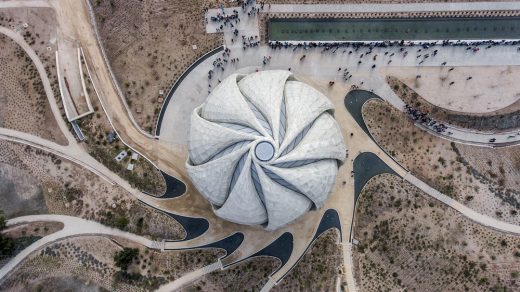
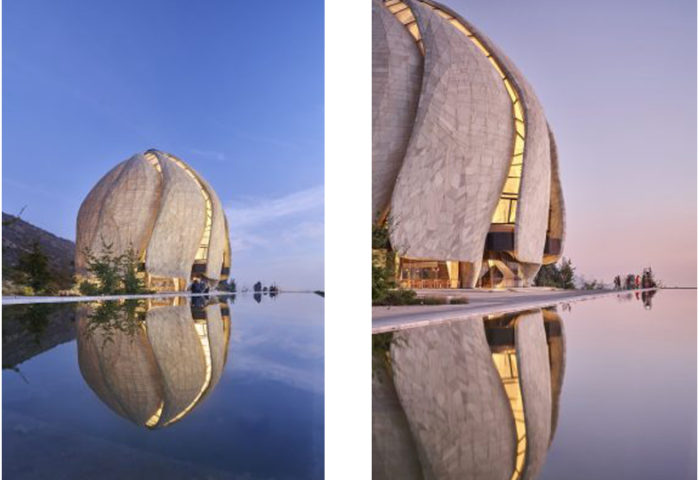
Inside the Bahá‘í temple, everything is done so that visitors gather in the center. Wooden benches placed in a semicircle foster silent contemplation. An alcove mezzanine offers a more intimate space, where you can still rest in communion with all visitors.

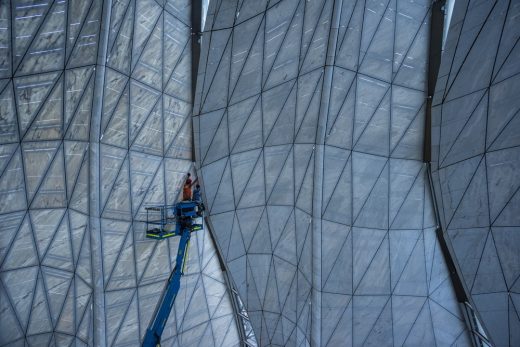
The temple sets on an important place in the Chilean community by hosting community clubs, youth assistance programs, activities for children in partnership with public schools.
The construction of this structure had to deal with the harsh climate of the region, subject to earthquakes for 400 years. This extraordinary challenge involved the hands of many engineers and craftsmen from Canada, United States, Europe, Chile as well as countless volunteers from around the world.
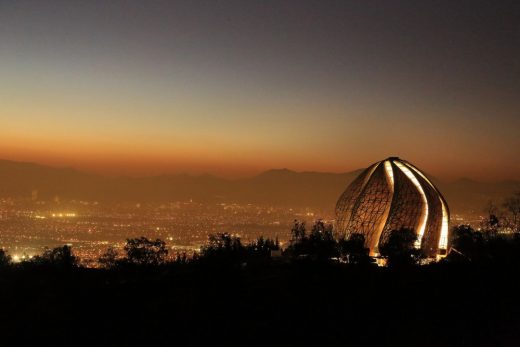
The RAIC jury describes the building as “a gem in a spectacular natural setting” and comments: “The timeless result is inspiring, it is a building using the language of spaces, light, shapes and materials to express an interpretation of the Bahá‘í philosophy and lessons that becomes universally accessible as shared spiritual and emotional experience. ”
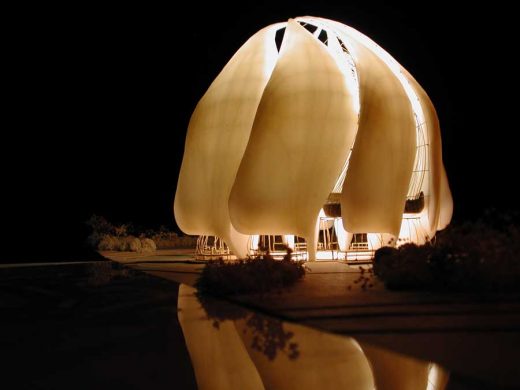
The Bahá‘í Temple is more than a story of complex design, innovation, sustainability and construction, it is the embodiment of the aspirations and the belief of a community that, even in the 21st century, it is possible to respond to a human desire to gather together, connect and participate in something that moves the mind.
Photo credits : Doublespace photography & Hariri Pontarini Architects